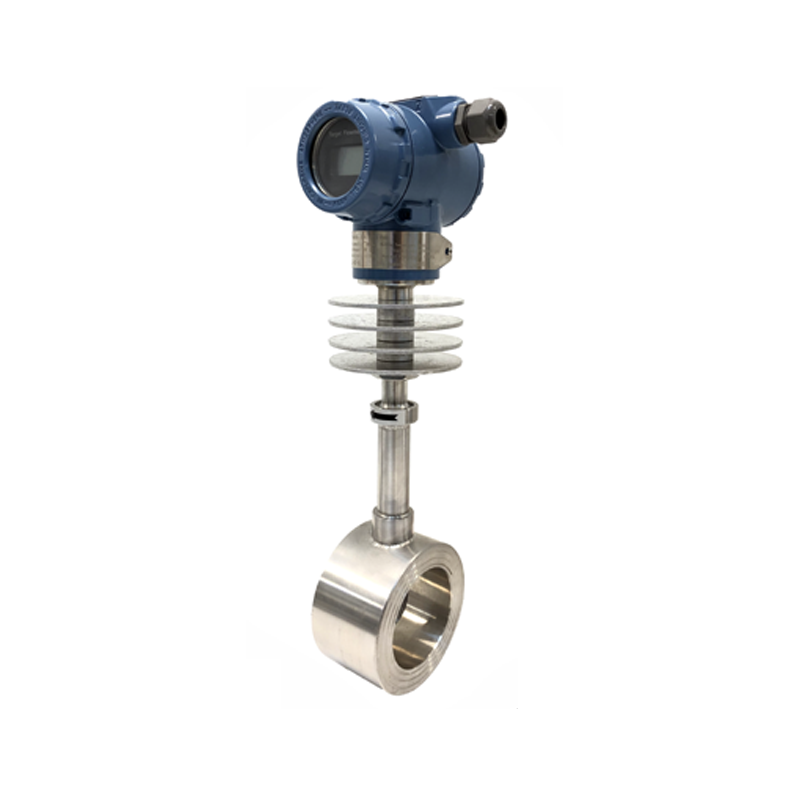
Target Flowmeter ( DN15 - DN2000 )
Target flowmeters are flowmeters with a capacitive force sensor with a mechanical part that prevents the flow. Target flowmeters consist of flow tube, user indicator and output components apart from these important measurement parts. According to different fluids and conditions, the capacitive force sensor can be selected according to the user.
Therefore, the measurement parameters given by the users are critical for the selection of the force sensor. While the fluid is flowing in the flow tube, the kinetic energy of the fluid exerts pressure on the slide (on the target) from time to time, and the flow rate is calculated with this force, which is proportional to the power and magnitude of the applied pressure (force) and the mathematical square of the fluid velocity. This calculation formula is: F= Cd.A.p. It is V2/2. In this formula;
F : Force applied to the slider ( kg )
Cd : Friction coefficient of the material
A : Axial projection area of the slider in the flow tube
P : Fluid density ( kg/m3 )
V : It is the average velocity ( m/s ) in the flow tube.
With the direct connection of the sliders to the transmission part, they transmit the force applied on it to the capacitive force sensor and provide voltage generation. This voltage calculation is calculated with the formula V= K.F. In this formula;
V : Voltage output of capacitive force sensor ( mV )
K : Constant of Proportion
F : The force emitted by the slide is ( kg ) .
Target flowmeters are specific flowmeters and are suitable for fluids with high viscosity characteristics. Usage areas;
Liquids ; Thick Petroleum Oil, Paraffin, Asphalt, Sulfuric Acid, Cooking Oil, Residual Oil, Acetone, Diesel, Mineral Water, Detergents, Soy sauce, Oil, Silicone Oil, Syrup, Solvents, Perfumes, Water, Aviation Kerosene, Soapy Water, Ketones, Glucose, Vegetable Oleic Acids, Salt, Sticky, Ink, Coolants, Gel, Milk, Bleach, Regulator, Soda, Additive, Cleaning Gel, Alkaline, Ammonia, Ship Oil, Chemical Reagents, Kerosene, Glycerin, Paint, Nitric Acid, High Boiling Point Organic Solvents, Lard, Alcohol, Ethylene, Polypropylene, Toluene, Ethylene Glycol, Mineral Oil, Liquid Sugar, Hydrostatic Acid, Automobile Coatings, Resins, Margarine, Vegetable Oil, Liquid Oxygen, Shampoo, Toothpaste etc.
Gases ; Air, Hydrogen, Natural Gas, Nitrogen, Hydrogen Peroxide, Flue Gas, Methane, Butane, Chlorine, Liquefied Petroleum Gas etc.
Steam ; Superheated Steam, Saturated Steam.

